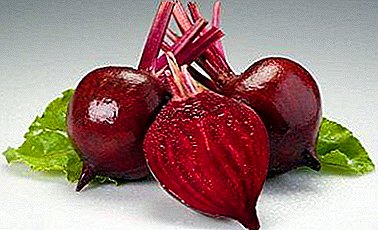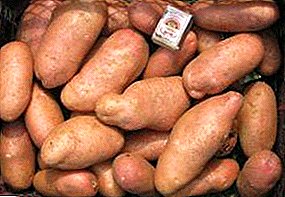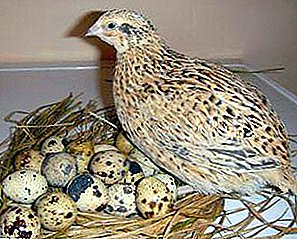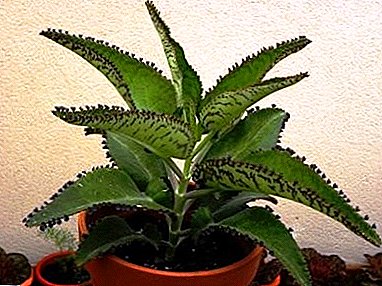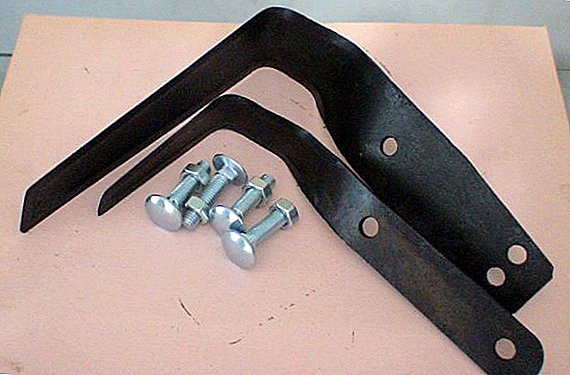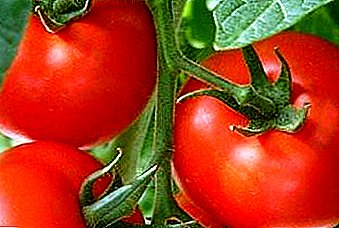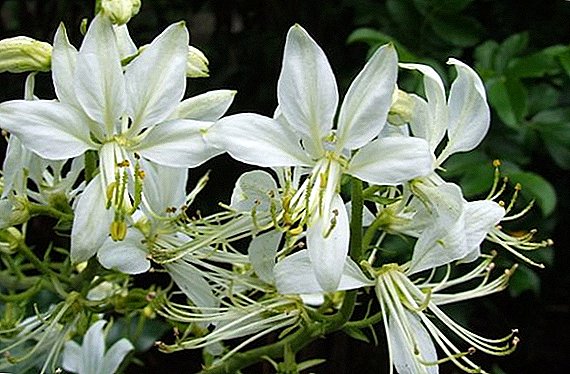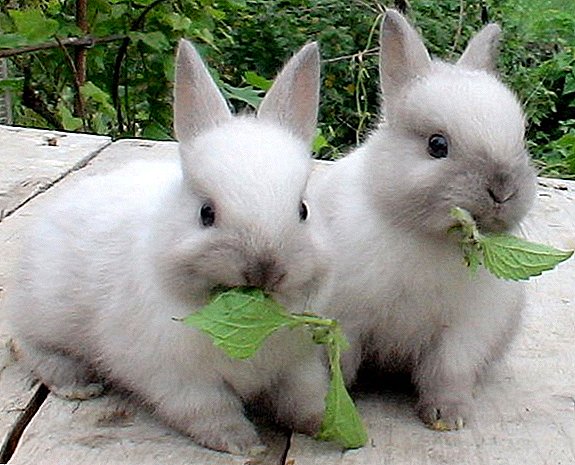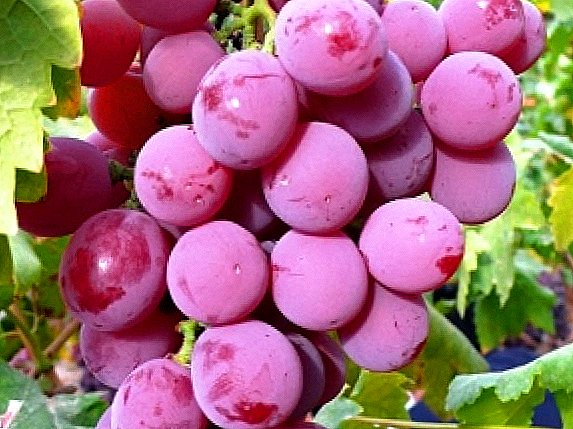
Do you want to grow grapes?
Not sure which variety to plant first?
Will you get a good and bountiful harvest?
These questions have an excellent answer.
And the name of this answer is the variety "Vodogray".
With proper care, bushes of this variety will delight not only with their green appearance, but also with an excellent harvest. Further all features of this grade are considered.
Description grape varieties "Vodogray"

Grapes of the Vodogray variety are a table hybrid of the Arcadia and Kishmish radiant varieties that were bred by the breeder V.V. Zagorulko.
"Vodogray" refers to early-middle varieties grapes by maturity, which are 120 - 125 days.
Bushes are powerful, shoots ripen well. The leaves are medium sized, five-lobed.
Clusters are large, weight reaches 1 kg, conical shape.
The berries are large, pink in color, weighing up to 10 g, size 34x20mm, oval.
The flesh is juicy, fleshy, with a characteristic muscat flavor and aroma.
High yieldstable Frost resistance is average, the permissible temperature drop to -21 ° C. Vodogray is resistant to mildew and oidium. Does not deteriorate during transportation.
Virtues:
- good taste
- regular harvest
- transportability
- resistance to fungal diseases
disadvantages:
average frost resistance
About the features of planting varieties

It is known that the grapes will safely survive the planting in both spring and autumn. But in the case of "Vodograi" this event is best held in the spring.
In the considered variety there is not a very high threshold of low temperatures, therefore during autumn planting the saplings will be more vulnerable due to possible frosts.
Each seedling harvests its own pit 0.8 x 0.8 x 0.8 m. It is important to dig holes in advance, that is, in the fall, so that the soil is compacted.
If, for some reason, this was not possible, then all the land that has been buried in the pit needs to be trampled down carefully. When digging out these holes about 40 cm of soil from the upper layer, be sure to save. This earth is mixed with humus, ashes, and possibly organic fertilizers and poured into each pit so that each well is half full.
From the ground, which has already been buried at the bottom of the pit, you need to form a small mound, on which the seedling is placed. On this cone the roots should be evenly distributed. Next in the pit you need to fill the ground, which was the lower layer. But it is not necessary to fall asleep a sapling completely. In the remaining space height of 5 - 10 cm water is poured already after landing completed.
Care tips for Vodogray
- Watering

In order for the grapes to produce a stable crop, its roots need a sufficient amount of moisture. Therefore, the bushes of this moisture-loving plants need irrigate regularly.
Throughout the active season, the bushes need to be saturated with moisture.
The first time the bushes need to be watered in early spring, when the buds have not yet dismissed. After all, the plant needs a lot of strength to recover from the winter. Such watering will be just the way.
The next time the bushes need to be watered before flowering, but in no case in time, otherwise the flowers will crumble.
After flowering has ended, and the first fruits have appeared, the bushes also need watering. The volume of vegetative irrigation is 3 - 4 buckets of water per 1 bush.
Before sheltering bushes need to do water recharge irrigation. Its volume is larger than that of ordinary watering, and 4 - 5 buckets of water are made for 1 bush. If you planted grapes in rows, then water should be poured into the furrows. If the bushes are sporadic, then a circular ditch with a depth of 30 cm is made around each of them, and the water is poured there.
- Mulching
Mulching is a covering of a circle with a radius of 40–50 cm with material in order to preserve moisture in the soil and prevent the development of weeds.
The first mulching is carried out immediately after planting. This contributes to better survival of the roots.
Further, this procedure is repeated several times per season, depending on how the bushes develop. The material can be used straw, grass, fallen leaves, humus, peat. Now there are a lot of materials that are designed specifically for mulching. Therefore, you can cover the ground around the seedling bush and them.
- Harboring
The variety "Vodograi" has average frost resistance, so you need to worry in advance about protecting the bushes from frost. This procedure is carried out in the autumn, before the onset of the first frost.
There are several types of shelter, but the most popular is shelter earth and polyethylene. In the first and second cases, the vines of each bush must be divided equally, laid on the ground and secured with metal straps.
But before laying on the ground, you need to put some kind of protective material so that there is no contact with the soil. In the case of covering the ground laid vines need to fall asleep a large amount of land to form a hill.
But if to cover with polyethylene, then above a row of vines it is necessary to install iron arches on which polyethylene is stretched. On the side, it is pressed against the ground, and the ends must be kept open until it is warm enough outside. Before the temperature becomes below zero, the ends will need to be closed.
- Pruning
Since the grapes "Vodograi" are quite weighty, this can lead to an overload of the vines, which in turn will entail various unpleasant consequences. Therefore, in the fall you need shorten all fruitful shoots 4 - 8 eyes, so that the load on the bush during the fruiting period was uniform.
- Fertilizer

Young seedlings of grapes in the first 3 - 4 years of life additional feeding is not needed, since both organic and mineral fertilizers have already been introduced into the pit for planting.
Adults, fruiting bushes simply need not only organic matter, but also nitrogen, phosphorus and potassium. Therefore, every year you need to make mineral fertilizers.
For the first and second feeding, which are made before the opening of the bush after winter and a few weeks before flowering, respectively, a mixture is added. This mixture consists of water, superphosphate, ammonium nitrate and potassium salt. 10 g of water is 20 g of superphosphate, 10 g of saltpeter and 5 g of potassium salt.
One volume of such a mixture is enough for one bush. Before maturation, nitrogen is not needed, bushes need phosphorus and potassium. Before you cover the bushes for the winter, you need to make potassium salt. It increases the winter hardiness of plants.
Organic fertilizers are applied less frequently, namely once every 2 - 3 years. Superphosphate and ammonium sulphate can also be added to the organic feed.
- Protection
The variety "Vodograi" has high rates of resistance to fungal diseases, but prevention does not hurt.
Phosphorus-containing fungicides, as well as a solution of Bordeaux liquids (1%), help well against mildew and oidium. Before flowering, the bushes need to be treated with these preparations, and then no fungus will harm your future harvest.


